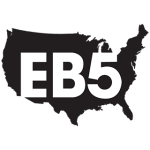
Making decisions involving large amounts of money is never a simple process. For immigrant investors interested in participating in the EB-5 program, this process usually involves researching hundreds of available projects and investment options. One consideration for investors is whether to put their money into a regional center project or to invest directly into an EB-5 project, perhaps their own project.
While there are many project options for you to investment, the low predicted return might be a deterrent. You might also want to have more control over the project. If your thinking starts heading in that direction, you will inevitably toy with the idea of creating your own project to invest in, either by using a direct investment model or a regional center investment model.
If you’re giving it some thought, there are a few things you should take into consideration before branching out on your own. Direct investments and regional center investments each have their own set of benefits and risks. Regardless of the type of project you select, you will benefit from the help of an experienced team of professionals who can help you with structuring your project model and associated documents and giving you valuable advice along the way.
Direct Investment or Regional Center: Pros and Cons
Investment Expectations
Currently, a minimum investment of $500,000 is required for EB-5 investments in projects that are located in targeted employment areas (TEAs). However, if you choose to invest directly into a project that you develop yourself, be aware that you will likely end up contributing far more than the $500,000 as well as many hours of your time. You will need to keep extensive documentation and ensure that all aspects of the project remain compliant with various federal, state, and local laws.
Total Investment Amounts
While a direct investment, especially in your own project, will give you more control over the project, it is also important to consider the extra costs that may be involved. Direct investments may give you a higher return on investment (ROI), but those costs may offset that. If you are running your own project, you will be required to not only invest your minimum $500,000 but also obtain the remainder of the needed capital for construction and operation of your new enterprise. Investors should also consider regulations that govern what jobs can be included in the job creation requirement of the EB-5 program. Direct investments require the creation of 10 full-time direct jobs for each investor. While some investors may wish to have their own project as a way to start a “family business,” family members who are employed may not be counted toward the 10 full-time jobs. It is also important to take into consideration the amount of minimum wage in the area and how much capital will be needed to pay for 10 full-time employees.
Documentation Requirements
The job creation requirements for the EB-5 program are stringent and add to the difficulty of complying with various local, state, and federal regulations that govern the new commercial enterprise (NCE).
As an example, if the NCE is a restaurant, you must turn a profit (or at least avoid losses) and maintain customers like for any other restaurant, but you must also document all jobs created directly from the NCE and maintain detailed documentation showing that the jobs were not only created but maintained for a full two years. That information needs to be included with the I-829 Petition to prove that EB-5 Program job creation requirements have been met.
While this is certainly a time-consuming and stressful process for an investor who has chosen to invest directly in his or her own project, investing through a regional center can cut out some of that. Regional center investments allow for more job types to be counted, including indirect and induced jobs. The process is thus much simpler and less nerve-wracking, since there is a much greater job cushion. In addition, the investor is no longer solely responsible for ensuring job creation for every single investor; the regional center takes over that responsibility.
Why Retain a Team of EB-5 Professionals?
The EB-5 immigrant investor process is one process you shouldn’t attempt to do on your own. The success of the process is the sole determinant of your ability to become a permanent U.S. resident through the program. It is important to surround yourself with a competent team to provide you with guidance throughout the process. You will need a qualified immigration attorney, an experienced business plan drafter, and additional financial and legal advisors regardless of the type of investment you make.
The Role of the Business Plan Writer
Even if you have developed your own business model and have obtained all the needed documents to support your plan, an EB-5 business plan writer will take that one step further and turn your model into a detailed plan that complies with all of the USCIS regulations that govern the EB-5 program. Full compliance is necessary to ensure the success of the investment process and immigration.
EB-5 business plans must be “Matter of Ho” compliant. Matter of Ho refers to a decision in 1998 that established precedence for determining the standards of an EB-5 business plan. Your plan will be measured against this precedent, and your business plan writer will make sure that your plan is fully compliant with those standards. A business plan writer can also help you with your business model and other aspects of your plan, but if there isn’t enough documentation to back up your proposal, you may want to consider investing through a regional center to increase the likelihood of successful immigration.
Both direct investment business plans and regional center business plans require a business plan writer to prepare an EB-5 compliant business plan. An economic analysis for the EB-5 project or a job creation study may provide added benefits. For regional center projects, all direct, indirect, and induced jobs created as result of the project can be included to meet the job creation requirement. Many of these jobs come from construction. Certain construction costs, such as expenditures for materials, furnishings, etc., can be used to count jobs beyond direct employees. This provides a greater chance of petition approval, as it is easier to count estimated jobs based on expenditures than it is to provide documentation of ten full-time direct employees for each investor at the time of petition filing.
Other than construction-related jobs, the rest of the qualifying jobs usually will come from the operations of the project once it is completed. For example, staff employed by a hotel after it has been completed would be included in this category. Direct employees of the enterprise can be used for all types of projects, and regional center projects can also count indirect and induced jobs associated with the operations of the enterprise.
While direct jobs can be proven with documentation such as payroll stubs and W-2s, they can also be calculated (along with indirect and induced jobs) with the help of economic models. These models use revenues to estimate job creation, and thus it is easier to prove that job creation requirements have been met since you simply need to produce financial statements that have been audited to show that the desired revenues have been achieved. An experienced economist can aid in the use of economic models. If using an economic model, however, it is important to have realistic revenue goals that you are sure you will be able to achieve.
The Need for Offering Documents
Offering documents describe the terms of the investment in detail. Contrary to the common belief that offering documents are only required for large numbers of investors or substantial offering amounts (several million dollars or more), offering documents are required in most EB-5 investment situations. It also improves a project’s marketability and decreases securities liability.
According to U.S. securities laws, securities offerings must be registered with the U.S. Securities and Exchange Commission (SEC). All investments are considered securities unless they are in one of the exempted categories. Most EB-5 investments fall under the Regulation D exemption.
Even though most EB-5 investments are exempt from the required securities offerings registration, anti-fraud regulations still apply. These regulations provide protection to parties by placing legal responsibility on those who state incorrect information or omit material contents on offering documents or any point during the sale of securities. Both entities and any individuals involved with the issuer can be held accountable for misrepresentations regardless of the extent of the involvement. Thus, it is important to include accurate and complete information in offering documents.
Preparing offering documents for an EB-5 project requires due diligence on the part of the document preparer. Preparers should exercise caution to ensure that all material information that investors may need is included within the documents and is an accurate representation of the investment details. Not doing this can lead to fraud claims and offering rescission and may lead to fines imposed on the parties involved.
The SEC has become increasingly involved in overseeing EB-5 projects and investigating fraud and similar issues. The risk of liability due to violation of anti-fraud regulations is very real, and a securities attorney can help reduce the risk by making you aware of any applicable regulations and instruct you as to how to remain compliant.
While careful preparation of offering documents can be a time-consuming and costly process, the cost of facing fraud charges for omissions or misrepresentation is far greater for all key players involved with the issuer.
Before deciding on which type of EB-5 project to go with, investors should carefully consider the risks and benefits involved with each project. Attorneys and other professionals can be valuable consultants during this process, as well as keeping in mind the primary goal of the investment—to obtain a green card.
Risk is unavoidable in any business venture, but because of inherent risks in the immigration process, care should be taken to minimize the risks associated with the investment. Implementing your own direct EB=5 project can complicate the process and increase the risks you may face. If you choose to use a regional center model for your own project, be mindful of timeframes. A regional center must be approved before investors can begin filing their initial petitions.
In the end, it’s your decision as an investor, but it is important to keep in mind the many factors involved. You may get a higher return with a project you direct yourself, but that also comes with a greater risk to you and your ultimate goal of obtaining permanent resident status.
